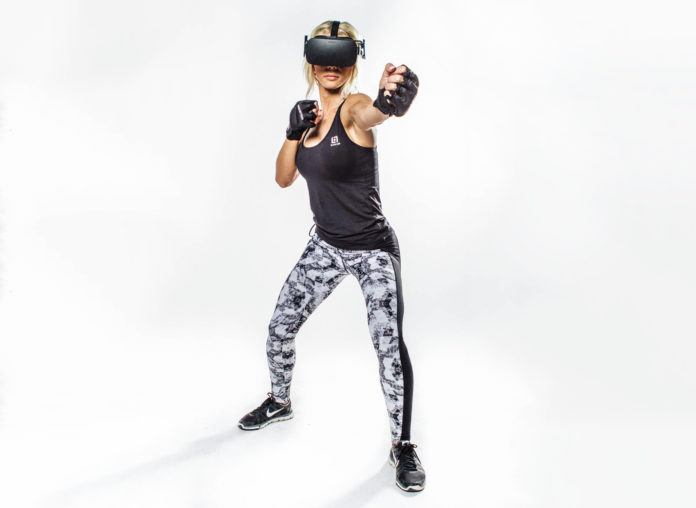You’ve probably heard about using VR to lose weight, but is adding weight to VR an equally good idea? Let’s find out!
Vests
During my 50 Day VR Fitness Challenge, one of the challenges was to rely solely upon VR for exercise, meaning no weight training. That’s why, after week 2, I started adding in weighted resistance with the assistance of a weighted vest.
I like using a weighted vest in VR for several reasons. The vest keeps the additional resistance close to the core, near your center of gravity, making it much easier to maneuver without throwing you off balance. This provides a very stable base for the variety of movements that VR can elicit. Adding a vest will also help maintain proper body alignment, so the impact forces that are applied to the connective tissues of the hips, knees, and ankles are delivered in a manner that they are positioned to absorb. This keeps the likelihood of injury very low. Perhaps what I like best about using a vest is that you can incrementally add a substantial amount of weight over time.
The weighted vest that I use is this one. It has a great fit, and the individual pockets allow the resistance to scale from 2.5 lbs all the way up to 40. I recommend adding one 2.5 pound bar to the vest every second or third workout, only adding weight when you feel confident that you can manage it. Almost any VR game works well with this ramping schedule. It’s quite a difference what even just 10 lbs can make, and if you’re able to add 20 or more lbs, you’ve developed a substantially stronger core and legs.
Ankle and Wrist Weights
I do not advocate for wearing ankle or wrist weights. Given the unpredictable movements of VR, wrist weights run the risk of applying force on the shoulders and elbows at compromising angles. I think ankle weights are safer to use than wrist weights, but I still fear that a misstep could leverage your hip or knee to a degree that could leave them vulnerable to injury.
Weighted Gloves
As an alternative to wrist weights, weighted gloves could be useful. The key difference between a weighted glove and a wrist weight is the greater accommodation that the wrist provides. Wearing a wrist weight, the wrist itself is unable to absorb any of the impact, instead traveling to the elbows and shoulders which are less adept to handle the stesses.
The wrist has greater articulation than the elbow and this will lessen the forces on the elbow and shoulder joints significantly. I recommend using just 1 lb, or even half pound, weights. It doesn’t sound like much, but trust me, once you factor in the greater leverages of having the weight so far out on your extremities, it will seem much heavier.
Games that will benefit from weighted gloves will be ones with predictable movement patterns, in other words don’t use them on games that have you flailing about. The Fastest Fit, BOXVR, and Knockout League are all games that telegraph what punches you’ll be throwing, avoiding the chance of any wild punches getting thrown. Archery games like The Lab’s Longbow, QuiVR, and Holopoint also work well, just be sure to switch your left and right hands as your bow arm equally, to maintain symmetry.
The cardio benefits of virtual reality fitness have been well established, but with these suggestions, it can be a tool to increase strength and muscular endurance as well. Just remember that adding too much too fast is more likely to get you hurt than get you strong, so introduce these techniques gradually and methodically.











